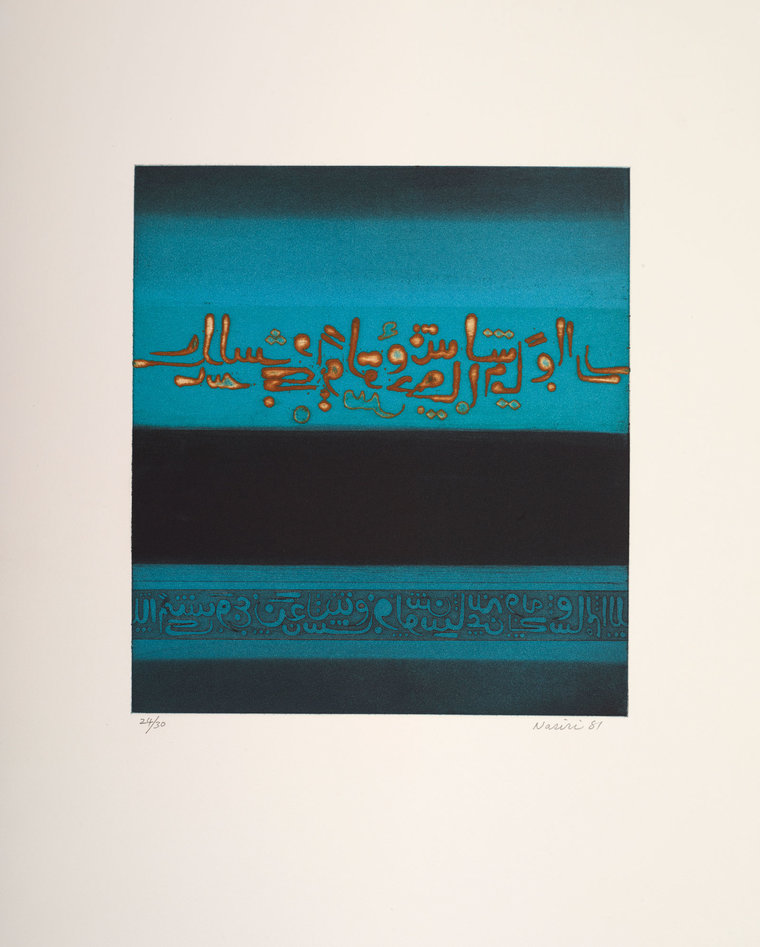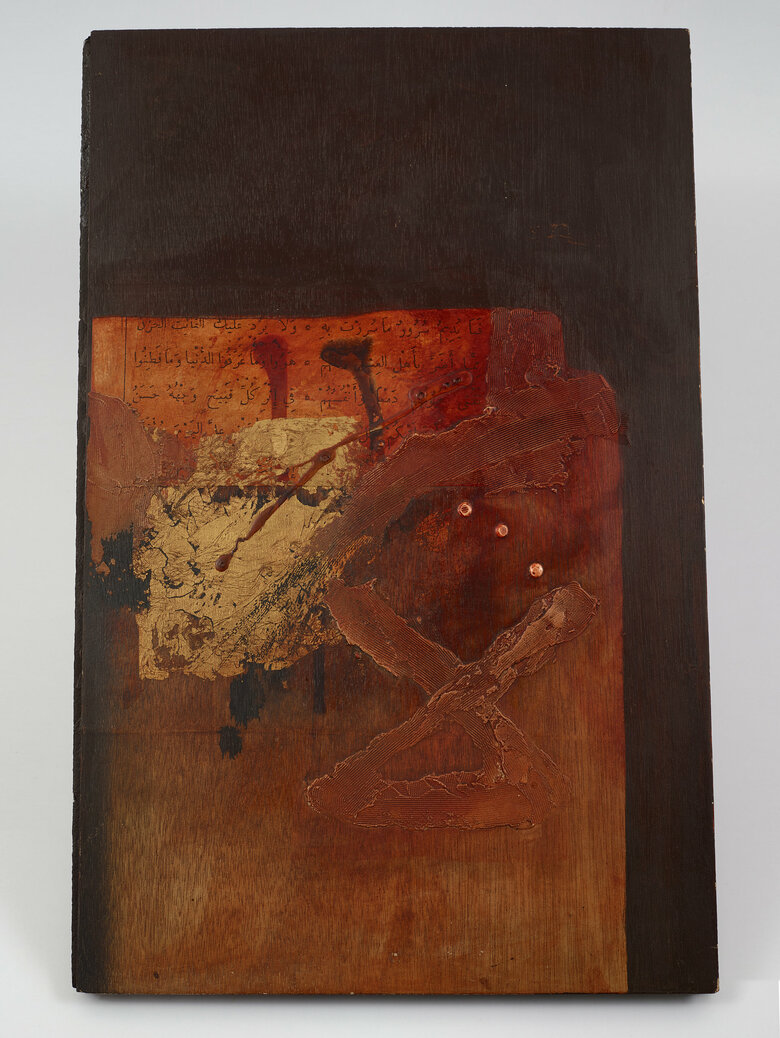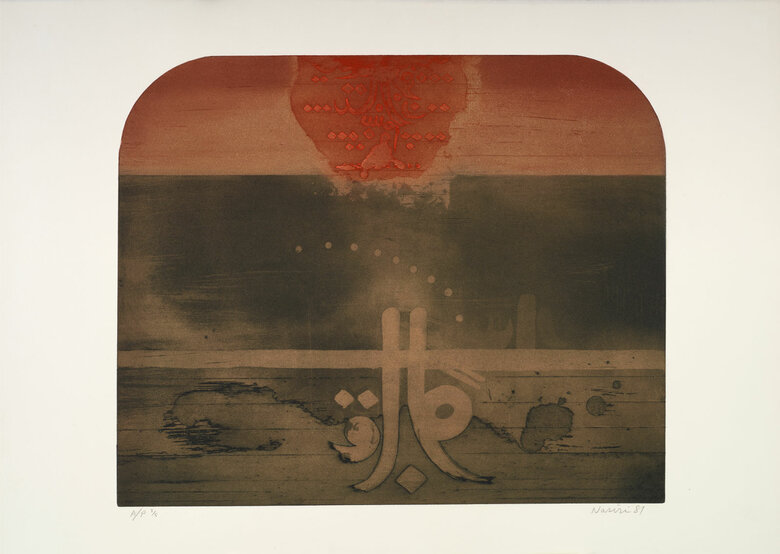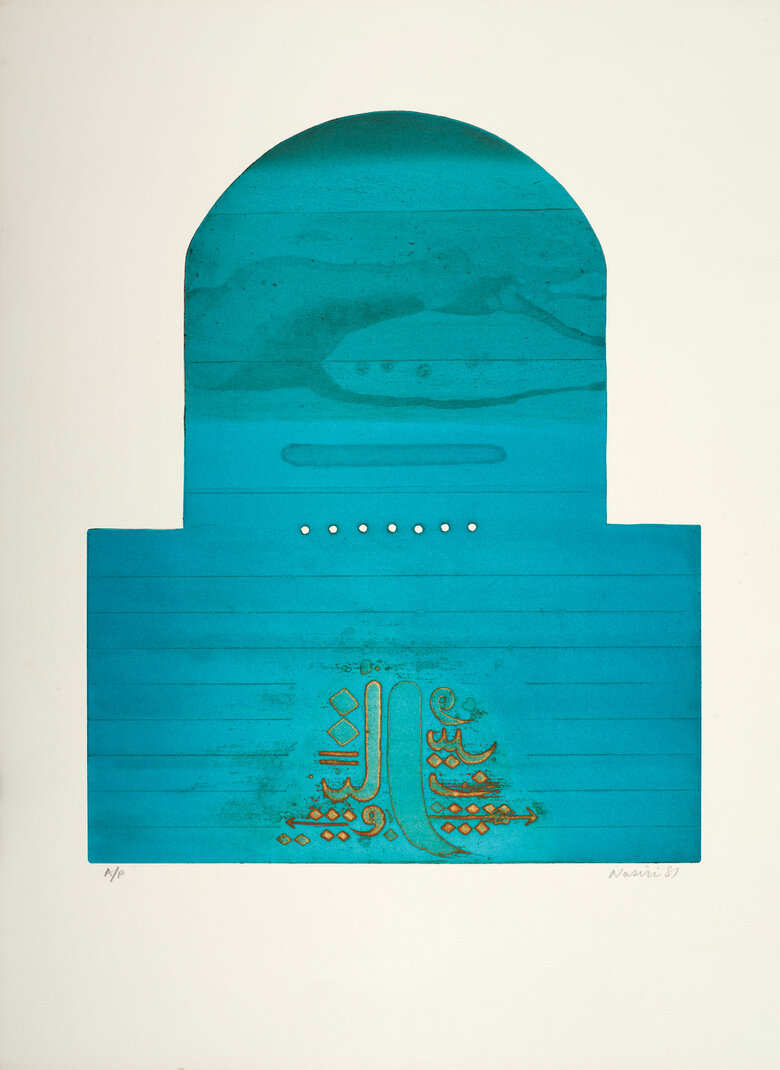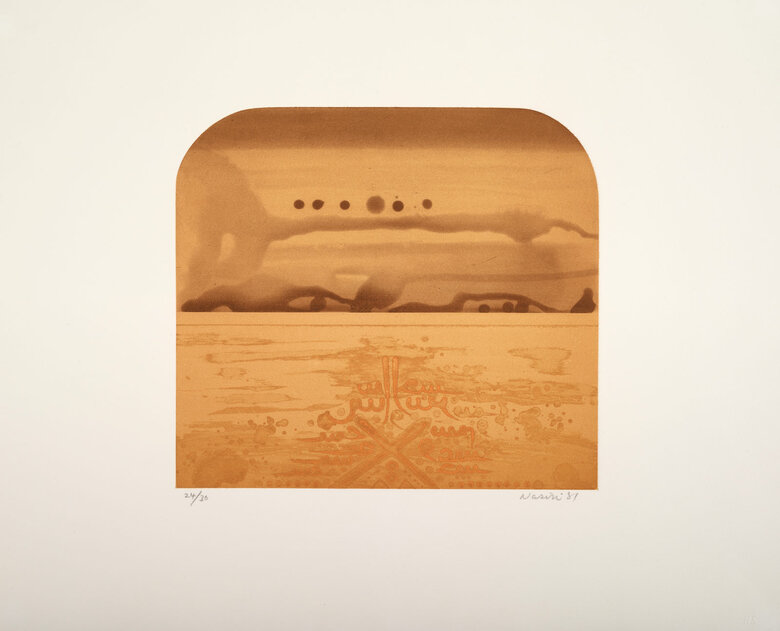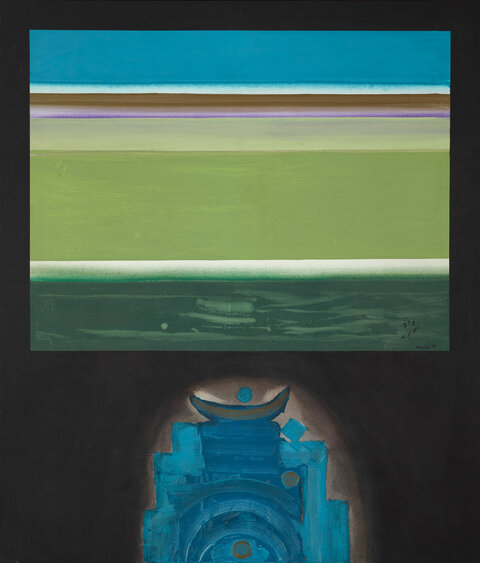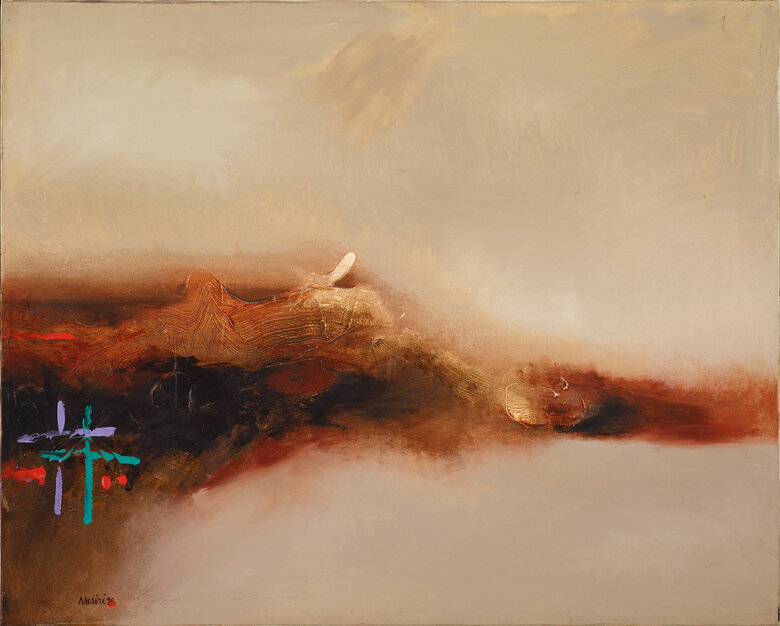Part of Rafa Nasiri’s series Variations on the Horizon, Untitled, 1981, explores the memories and remnants of human activity on earth through viscosity etching, aquatint, and Arabic calligraphy. On a square printing plate, Nasiri etched horizontal colored banners, which, in ancient Chinese cosmography, represent the earth as a space of mortality, human systems, and imperfections. They are also contrasted with heaven, which is symbolized by circles that represent harmony, circulation, and perfection.
Nasiri created this work as a form of etching using the viscosity technique. In viscosity printing, different ink colors are adjusted with linseed oil to achieve different thicknesses, hence different viscosities, ensuring each layer remains separate. Using this technique, he can print multiple ink colors from a single plate rather than requiring several plates for color separation. This viscosity technique allowed Nasiri to print broad horizontal strata oscillating between black and deep turquoise ink strips.
In the bottom half of Untitled, 1981, on a horizontal turquoise strip floating between two black banners, the artist registered outlined rounded Arabic letters. The letters do not intentionally spell out words but repeat flowing letters such as seen (س), waw (و), alef (ا), and lam (ل) with curved and ornamental diacritics. The letters are structured and uniform, filling the ribbon without gaps. In the top half of the print, highlighted bronze calligraphy pops out of the turquoise strata in a more free-flowing manner. The fading bronze in the letters gives a sense of rust or natural damage, offering the calligraphy an understanding of human fragility.
Nasiri uses Arabic lettering to reflect both memory and remnants of human activity. In 1968, while studying in Portugal, he was exposed to an environment of civil unrest, punctuated by demonstrations and strikes linked to leftist movements worldwide. This upheaval inspired a generation of protest art, including posters and graffiti. Nasiri became inspired by how text appeared around the city, graffitied so that passersby notice the writing but often miss its meaning due to the letters' abstraction. Nasiri drew inspiration from spontaneous writings and alleyway cracks – the negligible and abandoned kinds of human traces that one accidentally stumbles on.
The Arabic letter, with its expressive, plastic, and aesthetic possibilities, became central to Nasiri’s work. Stripped of linguistic significance, Nasiri wrote that he used Arabic calligraphy "regardless of its linguistic meaning, as a form of symmetry between nature and man, between space and time. It is a spiritual and an intellectual exercise of the everyday artistic creation of life."
Signed and dated in English lower right front with edition front lower left

